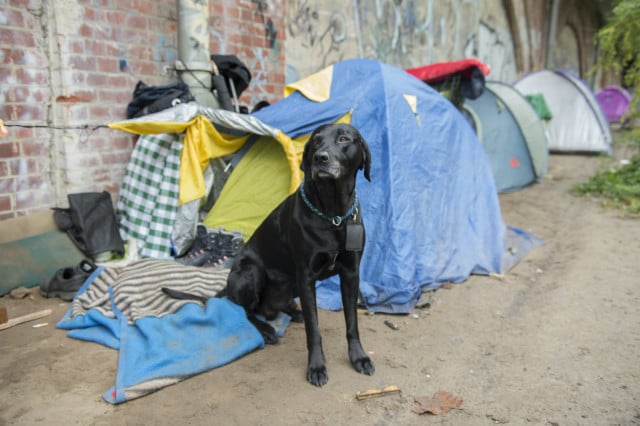In Hamburg alone, around 2,000 people live on the streets, a survey commissioned by the city – which has not yet been officially published – has revealed.
Since 2009, the number of people in the Hanseatic city without a fixed address has doubled. Two-thirds of these people have a foreign passport, with most coming from eastern Europe and Baltic and Balkan cities. In winter, there are an additional 760 spaces for the homeless to stay overnight.
Homelessness and rough sleeping has also become an increasingly visible problem in Berlin over the last few years. Approximately 6,000 to 10,000 people are living permanently on the streets.
According to observations by support facilities, this demographic includes more young people than ever before, as well as more women and more disabled people – there were around 35 wheelchair users. As an emergency measure, churches and other social agencies are offering 1,000 spaces throughout the city.
U-Bahn stations open their doors
The Berlin transport service, the BVG, traditionally kept open two U-Bahn stations in the night as a refuge for homeless people; however, it wanted to abandon this measure this winter due to security concerns.
Social senator Elke Breitenbach from The Left (Linke) party intervened. She said: “The senate is of the opinion, that the BVG, as a federal office, has a social responsibility for this city.” The stations Moritzplatz on the U8 line and Lichtenberg on the U5 will remain open at night throughout winter.
Over the next few weeks, the Berlin Senate also plans to set up heated waiting and heating halls in front of the two underground stations on a trial basis, reported local media on Tuesday.
U-Bahn stations also play an important role in Frankfurt am Main. For about 20 years, homeless people were allowed to stay overnight on the mezzanine of the Hauptwache station in the city centre during winter.
SEE ALSO: Freezing temperatures pose constant danger to Germany's homeless
But this is no longer possible as the U-Bahn and S-Bahns have started working throughout the night this year. The town has thus erected a sleeping place for those in need at the neighbouring station Eschenheimer Tor.
Costing €250,000, walls were raised, disused toilets were refurbished and heating was put in. Around 120 people can stay overnight there; at 6 am, the 560 square metre area is turned into a café, which up to 150 homeless people can use.
Housing in hotels, for dogs too
Bremen is going for a different option. Bernd Schneider, media spokesman for the Senator for Social Affairs, discusses the notion of a flexible system. “It is made up of a combination of emergency accommodation and short-term leased rooms in simple hotels.”
They estimate that they are dealing with around 500 to 600 homeless people. There has also recently been a proposal for accommodating homeless people with psychological issues, who do not recognize that they are ill.
But often, homeless people don’t seek out public places to sleep, according to Daniel Strumpe from the association “vision:teilen” in Düsseldorf.
As well as the fear of theft and violence, a large problem is that dogs – the faithful companions of homeless people – are normally not allowed into accommodation.
 Pogo, a dog belonging to a homeless person, in Berlin's Tiergarten in October 2017. Photo: DPA
Pogo, a dog belonging to a homeless person, in Berlin's Tiergarten in October 2017. Photo: DPA
“Then they (homeless people) prefer to sleep outside in a sleeping bag with their pal,” says Strumpe. In Cologne there are 10 spaces available per night for the dogs of homeless people in the animal welfare association in Cologne-Zollstock.
Outside the big cities there are also offers of help available. For example, Sömmerda, Thuringia: in the town, the evangelical church organizes accommodation for the homeless, called the Elisa-Bett, according to a spokesperson.
A small flat in the town is rented out for the scheme. “The response was steady in the past years: the offer was taken up once or twice a month,” said the spokesperson.
If the room isn’t free, people sometimes call directly on the rectory. They were then accommodated.
Below is a poster that's being featured in the Berlin U-Bahn system, letting homeless people know where there are spaces.
.jpg)
Photo: Rachel Loxton



 Please whitelist us to continue reading.
Please whitelist us to continue reading.
Member comments